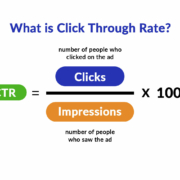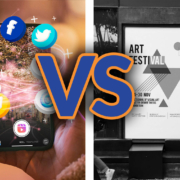A Digital Marketing Must: Retargeting Ad Campaigns
You may not know exactly what a retargeting campaign is, but maybe you’ve visited a website, clicked around, even put an item in your shopping cart, and then, for whatever reason, left. Then, maybe days or weeks go by, and you see an advertisement for the product that slipped away. What the hell? Surprise: it’s a retargeting ad.
How a Retargeting Strategy Works
So here’s the skinny on how retargeting works – when you (or any website visitor) go to a site for the first time, a pixel is installed on your web browser. Put away your tinfoil hat; a pixel isn’t spying on you. Well, it is, kind of. But you don’t have to delete your browsing history just yet.
A pixel is a type of cookie (are you still with us?) that informs the merchant’s Google Ads or Facebook Ads account to show ads for the stuff you were just looking at but didn’t buy. It’s like we’re living in the future (or 2023).
What’s a Cookie Again? I Forgot
A cookie is a bit of code that gets installed on your web browser. They store information on how someone browses the internet and builds a profile based on their behaviors.
Why Retarget Site Visitors at All?
Whoever’s website you went to wants to keep their brand awareness in the front of your mind – online shopping cart abandonment is a very real thing. Pixel-based retargeting is an effective method of reaching a custom audience that may be interested in a certain product or service so, obviously, you would want this on YOUR website, right?
Say that someone visits your ecommerce site, puts products into their online cart, and then leaves. They’re the one that got away. You want to get them back, right? Show them Facebook retargeting ads offering special pricing or a coupon if they act today. Or maybe someone visited your site once and didn’t buy anything. That person then sees ad copy promising free shipping for first-time buyers. There are other parameters you can adjust to help optimize a retargeting campaign. Who knows, maybe that was the one thing stopping them from clicking “complete order.”
Types of Retargeting
You can retarget in different ways, and each one has advantages depending on how you want to engage your chosen audience.
Time-Based Retargeting
It’s not complicated; time-based retargeting is based on a certain timeframe. After someone’s first visit to your site, you can retarget them after a certain amount of time has gone by.
It’s not good practice to retarget too soon after they visit. Hitting someone with an ad the minute they leave your site can leave a bad impression about your brand. You don’t want them to think you’re spying on them.
Keep in mind that ad management programs usually are set by default to start retargeting thirty days after a site visit.
Behavior-Based Retargeting
Retarget potential customers after they have taken certain actions or visited specific pages on your site. If they have an abandoned cart, you can retarget them to influence a purchase. Or, even better, if the customer has visited a certain product page, you can retarget them with information about that product (or why they really need it). They were interested in the first place, now you just gotta get them to seal the deal.
The Elements of a Successful Retargeting Ad
Like any advertisement, it has to appeal to the viewer and entice them to buy the product. To engage with a retargeting audience, a successful retargeting ad should include:
- An attention-grabbing headline: Headlines once sold newspapers, now they get clicks. Keep it interesting, noteworthy, and relevant.
- Compelling graphics: If you want to target people, you need visuals. Moving graphics attract more eyes than static graphics, but like your headline, it can’t be misleading.
- A click-worthy CTA: a “call to action” is the button that the customer clicks on to make things happen.
Not only do these elements need to apply to your product or service, but also to the demographic you’re trying to appeal to.
Are Retargeting and Remarketing the Same?
They sound similar, don’t they? Retargeting and remarketing ads definitely have the same goals: to reach out to your target audience and existing customers to get them to make a purchase.
Retargeting tries to convince potential customers to return to your site through display ads. Remarketing campaigns are rekindling interest in customers that have already bought your product. You may want to sell them another specific product or introduce a new product that they might be interested in. This marketing strategy usually uses email marketing, since, as existing customers, they have already supplied their contact information and have been added to an email list. The great thing about using an existing customer list is that you know they’re interested in your business – after all, they’ve bought from you before!
Capture a Wide Audience With Digital Ad Campaigns
With remarketing and retargeting ads, you can ensure that you’re maximizing every sale opportunity possible. But in order to make your retargeting campaign as effective as possible, partner with the digital ad gurus at Lift Marketing.
Whether you’re retargeting with Google, LinkedIn, or any other social media platform, Lift Marketing makes sure your conversion rates go up and you see results. Don’t wait another minute; contact Lift Marketing and watch your business take off!










